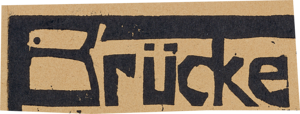Architecture
Outside view of Brücke-Museum, September 1967, photo: Reinhard Friedrich, Academy of Arts, Berlin, Werner Düttmann Archive, No. 33 F.33/8
“My dear Mr. Düttmann, now that the furore of the opening has died down, I would like to waste no time in thanking you most sincerely once again. Your building for Brücke-Museum is a creation one can’t help but praise … The building has good proportions and correct dimensions throughout … and the landscape has been incorporated in a way that is nothing short of exhilarating. It will no doubt bring cheer to each and every visitor while they are here … Yours always, KSR”
This is what the artist Karl Schmidt-Rottluff wrote to Berlin-based architect Werner Düttmann on 25 September 1967, ten days after the official opening of Brücke-Museum. These brief lines are testament to the close connection between them. Düttmann’s building, which today is listed as a historical building, was constructed after intensive joint planning with Schmidt-Rottluff and Leopold Reidemeister, the founding director of the museum.
Since the members of the artist’ group Brücke always strived for establishing a new unity between human and nature, and in their artwork borrowed numerous motifs from nature as part of this project, they chose a location close to nature for the museum. The architecture on the edge of the Grunewald forest directly incorporates its surroundings and, thus, ties in with the Brücke’s ideals. The museum rooms are grouped around an inner courtyard, while floor-to-ceiling windows offer views of the surrounding pine forrest. The aesthetic contrast between this modern low-rise building and what is today the Kunsthaus Dahlem was also deliberately chosen. Düttmann contrasted the expansive former studio building, which the Nazis built for the sculptor Arno Breker, with the clear and in its proportions human-scale proportions of the museum following the Bauhaus tradition.
Previous building projects such as the Akademie der Künste on Hanseatenweg, the Hansabibliothek, or the church of St. Agnes in Kreuzberg show how Düttmann consciously used different materials and colourations. At Brücke-Museum exposed concrete, oak wood, olive-green window frames, the coconut carpet in the galleries and the black bricks in the entrance, as well as the white of the building structure, make up the colour palette of the building. Düttmann conceived his buildings holistically, including the interior design, and with great attention to detail. This lends Brücke-Museum less the appearance of a museum temple and more the character of a private villa which invites you to linger.





